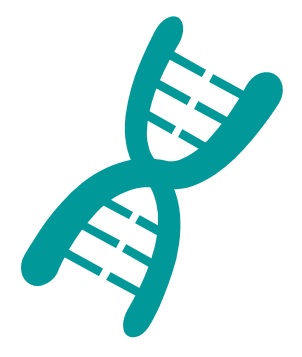gp100 (280-288) A288V HLA-A*0201 antigen peptide – YLEPGPVTV
SB-PEPTIDE offers gp100 (280-288) A288V variant peptide – YLEPGPVTV for its promising use in immunotherapy.
gp100 protein: potent melanoma-specific antigen
gp100 (Uniprot: P40967) 661 amino acids long type I transmembrane glycoprotein,also known as premelanosome protein (PMEL) for the gene encoding it,is primarily known for its crucial role in melanosome morphogenesis and pigmentation. Indeed,it orchestrates the maturation of these organelles,that are responsible for melanin synthesis,storage,and transport.
More than its implication in melanosome maturation,melanogenesis,biogenesis,and melanin polymerization,gp100 has gained significant attention and recognition as tumor-associated antigen (TAA). Hance,its dynamic and multifaceted nature piqued the interest of researchers and immunobiologists to explore PMEL’s potential in shaping the future of cancer treatment.
gp100 280-288 immunogenic epitope – YLEPGPVTA
Fragments of this protein hold the key to unlocking the body’s natural defense mechanisms against melanoma and have thus been harnessed to develop cancer vaccines. Specifically,gp100 (280-288) HLA-A*0201 epitope – YLEPGPVTA (IEDB: 74638) has exhibited its potential as a robust immunogen,thanks to its capacity to induce cytotoxic T lymphocyte (CTL) responses at remarkably low concentrations (<pM).
Additionally,studies have even shown that nonamer peptide is naturally processed and presented in its DNA-encoded form,making it an ideal candidate for tumor vaccine strategies.
gp100 (280-288) A288V variant peptide – YLEPGPVTV
Strategic mutation of the C-terminal gp100 280-288 peptide’s alanine to valine in the derived gp100 (280-288) A288V variant peptide YLEPGPVTV (IEDB: 74641) demonstrated enhanced binding to human leukocyte antigen (HLA) molecules,while maintaining comparable affinity to that of its wild type version (YLEPGPVTA) for its T-cell receptor (TCR).
With the natural immunogenic characteristics of gp100 (280-288) fragment and its improved TCR binding capability,YLEPGPVTV peptide represents a pioneering step in optimizing immunotherapy.
SB-PEPTIDE would be happy to provide YLEPGPVTV for research purposes. Feel free to reach out!
Technical specifications
 |
Sequence : YLEPGPVTV |
 |
MW : 974 ,11 g/mol (C46H71N9O14) |
 |
Purity : > 95% |
 |
Counter-Ion : TFA Salts (see option TFA removal) |
 |
Delivery format : Freeze dried in propylene 2mL microtubes |
 |
Peptide Solubility Guideline |
 |
Bulk peptide quantities available |
Price
| Product catalog | Size | Price € HT | Price $ USD |
| SB312-1MG | 1 mg | 77 | 96 |
| SB312-5MG | 5 mg | 270 | 337 |
| SB312-2*5MG | 2×5 mg | 385 | 481 |
| SB312-5*10MG | 5*10 mg | 1155 | 1443 |
References
Journal of Hematology & Oncology. 2019 Sep 14;12(1):99. doi: https://doi.org/10.1186/s13045-019-0788-4
TCR-like antibodies in cancer immunotherapy.
Frontiers in Immunology. 2017 Aug 18;8:1001. doi: https://doi.org/10.3389/fimmu.2017.01001
Therapeutic Antibodies against Intracellular Tumor Antigens.
Journal of Immunology. 2002 Oct 01;169(8):4399-4407. doi: https://doi.org/10.4049/jimmunol.169.8.4399
Modification of a tumor-derived peptide at an HLA-A2 anchor residue can alter the conformation of the MHC-peptide complex: probing with TCR-like recombinant antibodies.
Int J Cancer. 1999 Aug 27;82(5):669-77L. doi: https://doi.org/10.1002/(sici)1097-0215(19990827)82:5%3C669::aid-ijc9%3E3.0.co;2-#
Mass-spectrometric evaluation of HLA-A*0201-associated peptides identifies dominant naturally processed forms of CTL epitopes from MART-1 and gp100
Melanoma-reactive human cytotoxic T lymphocytes (CTLs) mediate tumor regression in vivo through specific recognition of MHC-associated peptide epitopes,many of which are encoded by the melanocytic tissue differentiation proteins gp100/Pme117 and MART-1/Melan-A. Vaccines using these peptides may induce protective or therapeutic immunity against melanoma. Rational design of such approaches is aided by a clear understanding of the identity of these antigenic peptides; however,most CTL epitopes described to date were identified indirectly. Especially where these peptides may be used in human clinical trials for the treatment or prevention of cancer,there is substantial need for direct evaluation of HLA-A*0201-associated peptides from MART-1 and gp100 that are naturally processed and presented. To that end,we have isolated peptides directly from HLA-A*0201 molecules of human melanoma cells and have determined that naturally processed epitopes for HLA-A*0201-restricted,melanoma-reactive CTLs include the nonamers MART-1(27-35) (AAGIGILTV),gp100(154-162) (KTWGQYWQV),gp100(209-217) (ITDQVPFSV) and gp100(280-288) (YLEPGPVTA) and the decamer gp100(476-485) (VLYRYGSFSV). Among these,the one that appears to be most abundant at the cell surface is gp100(154-162) (KTWGQYWQV). The others are among the less abundant peptides. HLA-A*0201-restricted CTLs from one melanoma patient who has survived metastatic disease recognized MART-1(27-35) (AAGIGILTV),gp100(280-288) (YLEPGPVTA) and gp100(154-162) (KTWGQYWQV) and were cross-reactive on longer peptides that contained these nonamer sequences. These peptides,identified by both an indirect genetic approach and by a direct peptide approach,can be used for tumor vaccine strategies with confidence that they are identical to the naturally processed peptide epitopes presented at the surface of melanoma cells in association with HLA-A*0201 molecules.
The Cancer Journal From Scientific American. 1998 Sep 01;4(5):316-323. PMID: 9815296.
Immunization of patients with melanoma peptide vaccines: immunologic assessment using the ELISPOT assay
Purpose: Interest in the development of antimelanoma peptide vaccines has been renewed by the identification of specific epitopes recognized by tumor-infiltrating lymphocytes that mediate tumor regression after adoptive transfer. The human leukocyte antigen (HLA)-A2*0201-restricted,nonmutated melanocyte differentiation antigen gp100 has multiple T-cell epitopes,of which three are recognized by most gp100-reactive tumor infiltrating lymphocytes. Synthetic peptides based on two of these epitopes,or modifications to improve HLA binding affinity,were used individually to vaccinate patients with metastatic melanoma. The purpose of this study was to evaluate the success of the vaccinations,as determined by the results of enzyme-linked immunospot (ELISPOT) tests of individual immune cells.
Patients and methods: The ELISPOT assay was used to measure the immunologic reactivity of peripheral blood lymphocytes from patients with metastatic melanoma before and after vaccination with gp100 peptides mixed with incomplete Freund’s adjuvant. The peptides were g209 (ITDQVPFSV),g280 (YLEPGPVTA),modified g209 (g209-2M: IMDQVPFSV) or modified g280 (g280-9V: YLEPGPVTV) peptide. The patients’ lymphocytes were tested by use of an ELISPOT assay for their ability to secrete interferon gamma with and without 12 days of in vitro sensitization with peptide.
Results: Patients were successfully vaccinated by gp100 peptides,as judged by the ELISPOT assays. Restimulation of the patients’ lymphocytes in vitro with peptide for 12 days before the ELISPOT assay significantly amplified the immune activity. Increased immune activity after vaccination was specific for the immunizing peptide or its altered form,was major histocompatibility complex restricted,and was apparent against HLA-A2+,gp100+ melanoma cell lines and against T2 cells pulsed with the appropriate synthetic peptides. In general,the frequency of immune T cells was 10 to 100-fold higher in ELISPOT assays against peptide-pulsed T2 cells than against melanoma cell lines. Judged by the ELISPOT assays,vaccination was successful in six of seven patients injected with g209-2M when tested against g209-2M peptide and in five of these seven patients when tested against the native g209 peptide. Vaccination was also successful in five of six patients injected with g209,one of three patients injected with g280-9V,and four of seven patients injected with g280. Even without peptide restimulation in vitro before the ELISPOT assay,the frequency of immune T cells among fresh peripheral blood mononuclear cells tested 3 weeks after a second vaccination with g209-2M peptide was elevated in four of six patients and was about 1/1000 of cells tested against the same peptide pulsed onto T2 cells.
Discussion: Gp100 peptides were selected for vaccine development because they are epitopes recognized by tumor-infiltrating lymphocytes that are associated with tumor regression after adoptive immunotherapy in patients with metastatic melanoma. In the present study,most of the patients vaccinated with the gp209-2M peptide in incomplete Freund’s adjuvant generated circulating antigen-specific immune T cells that could be detected by restimulation in vitro followed by an ELISPOT assay for individual cells secreting interferon gamma. The immune T cells reacted not only with the HLA-A2 restricted modified peptide but also with the native peptide and with melanoma cells that express gp100 and HLA-A2. Analysis of T-cell responses at the single cell level will be a valuable aid in assessing the effectiveness of melanoma vaccines and in determining optimal vaccine formulations and delivery.
